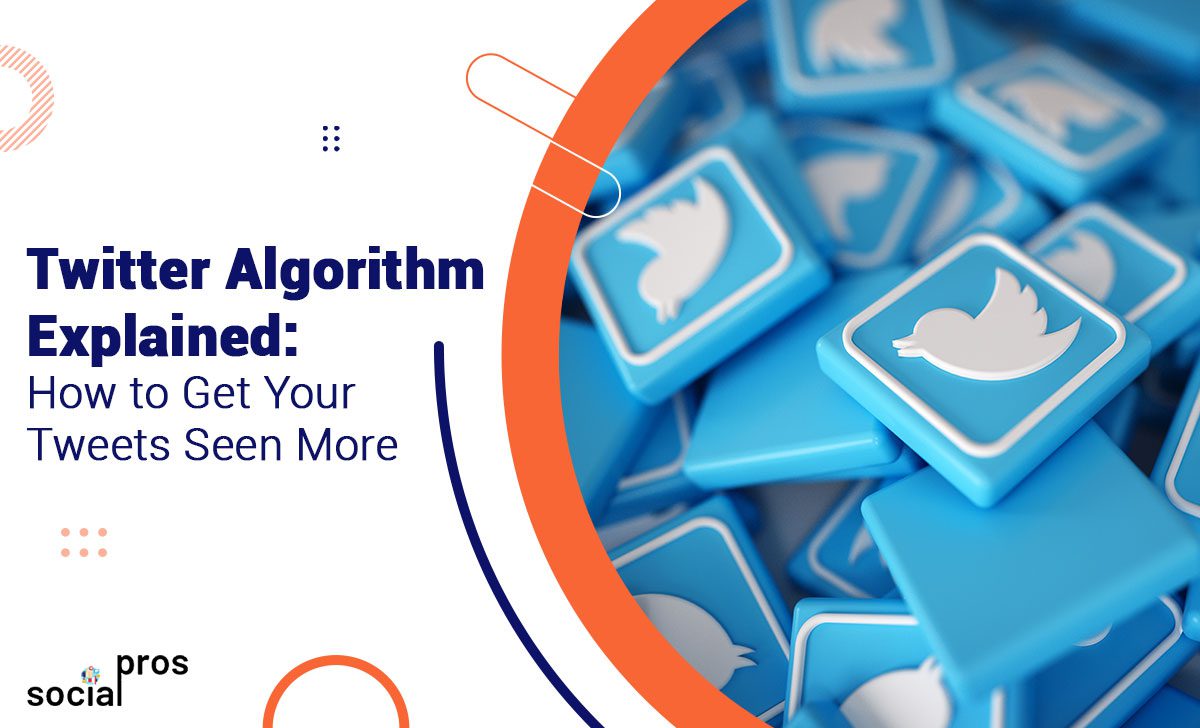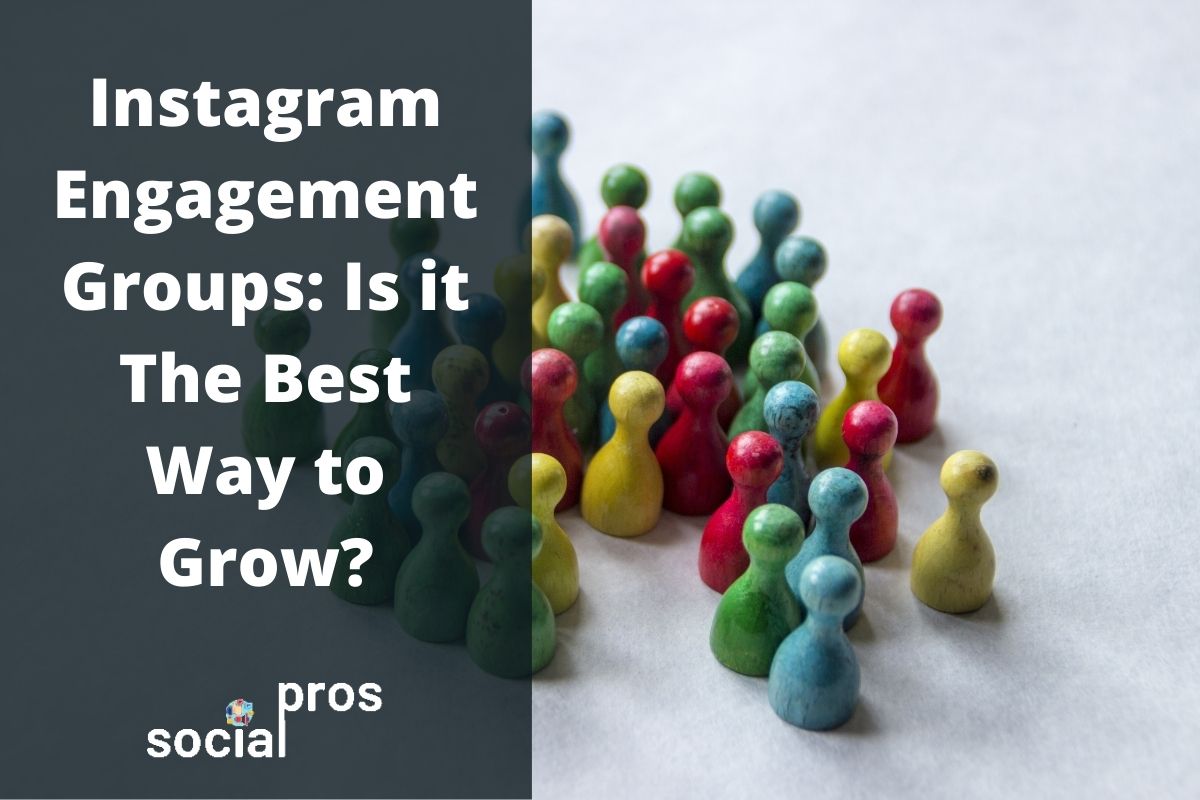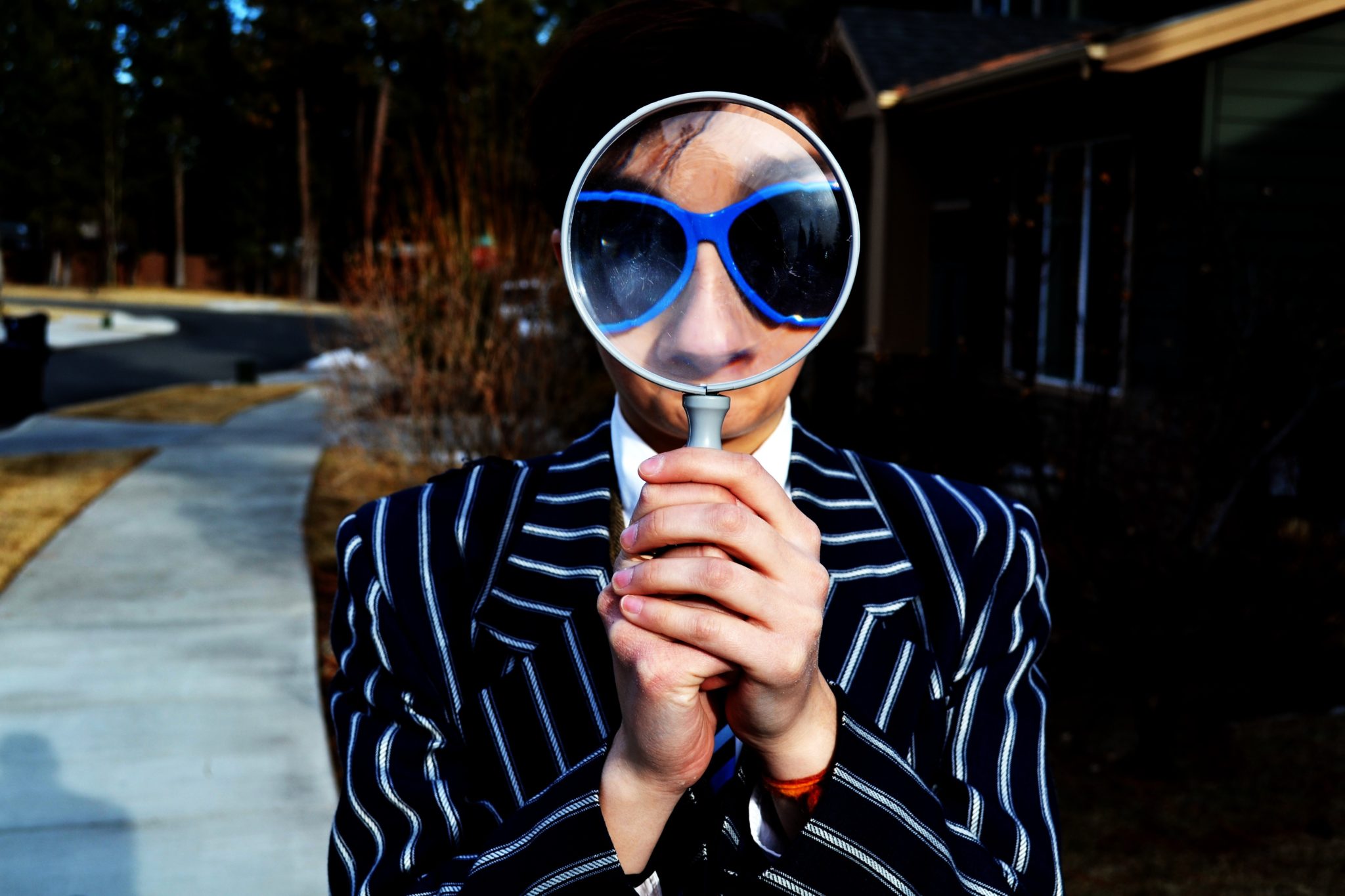Page Contents
Every social channel has a unique algorithm nowadays, and Twitter is not an exception. But what do these ‘algorithms’ mean? In simple words, algorithms are the logic behind each social platform’s working system. For example, algorithms determine how content is processed, what category they belong to, who sees them, and what should be banned. Twitter algorithm pretty much works the same way. The platform has developed a unique algorithm of its own to automate what goes on around its community.
But why should you be familiar with the Twitter algorithm? If the algorithm is basically a system Twitter uses to regulate interactions and activities in its community, why do we need to understand its logic? The answer is simple: to better succeed in your efforts on Twitter. It doesn’t matter if you’re looking to make more money from Twitter, increase exposure to your business, brand yourself, or even get more followers on Twitter; you’ll need to understand the Twitter algorithm and somehow take advantage of it.
So if your purpose is any of the above or similar to one, you should keep reading this blog post to find out how to get your tweets seen more often by gaining a comprehensive understanding of the Twitter algorithm.
How Does the Twitter Algorithm Work?
Twitter has become the leading social platform in the U.S. by making gains of 78 percent change in user engagement since 2018. And we all know that there is no such thing as accidental success.
Since the platform’s introduction in 2006, the Twitter algorithm has gone through many ups and downs, and the company will undoubtedly continue to experiment with new ideas with its timeline. Twitter implemented these changes to increase CTRs and reach.
“Our algorithm changes on an almost daily to weekly basis”
Deepak Rao, product manager of the Twitter timeline
Every timeline is about personalization, and all the platforms use machine learning to make that happen. Are you a fan of the series? Open the Twitter app, and there is the release date for the new HBO drama. Have you been looking for information on architecture? Take a look at these photos of Islamic architecture in Oman.
You may have noticed a hierarchy as you scrolled down your Twitter timeline, Ranked Tweets appearing at the top of your timeline, followed by “In case you missed it.” You suggested tweets, promoted content, and retweets appearing at the bottom in reverse-chronological order. The above-mentioned hierarchy shows that Twitter concentrates on strengthening already-made connections rather than discovering new content and people, the opposite of a platform like YouTube. That is the primary reason why an issue is quickly amplified and heated between a like-minded community on Twitter, and its benefits and drawbacks are greatly exaggerated.
Unlike other platforms, Twitter allows users to switch between two Twitter timelines: Top Tweets and Latest Tweets. The Latest Tweets let you go off Twitter’s algorithm and go back to the reverse chronological order. While by clicking the three stars on the top-right of your Twitter app, you can activate Top Tweets mode and catch up with the most important tweets of your feed.
Twitter Algorithm Signals and Factors
If you’re used to clicking the three stars and using the Latest tweets, you’re disabling much of the Twitter algorithm and its ranking signals except recency. But if you don’t do that, as most users don’t, four ranking signals will pick up on your top tweets.
- Recency: How long it has been since an account tweeted it.
Recency is the first and foremost criterion in prioritizing your timeline. Think of Twitter as a news broadcast and tweets as news, and then you find how important the freshness of the tweets is. Twitter is all about what’s trending right now and not yesterday or last month.
- Engagement: How many clicks, retweets, likes, and impressions you have.
Regarding engagement elements, it’s notable that, against common beliefs, favorites and likes are the least important, with retweets coming in second. Comments take the top spot when it comes to the importance of interactions. “Twitter is all about moving words,” said Jack Dorsey, the brilliant Twitter CEO, in his interviews. That’s why it’s better to start a conversation thread on Twitter.
- Relevance: The frequency of your interaction with the keywords used in the tweet.
What Twitter does is building up a digital tribe of people with the same thoughts and interests. That’s the approach twitter has picked to let you know your like-minded unknown peers. And, rather than following the keywords you used in your tweet to convey what’s on your mind, what would be a more effective technique for a machine to read your mind and point of view?
- Rich media: What the media type is (images, videos, gifs, polls, etc.) & which one you engage with the most.
Even though Twitter is a platform of words, with 93% text-based tweets, tweets with visual content receive more likes, shares, and retweets than those without.
- Activity: The amount of time you spend on the account.
Not interacting with people on Twitter translates into not existing on the platform. So. if you disappear for a while or stop tweeting and then reappear, don’t expect Twitter to rank your tweets highly in the feed initially. Twitter always keeps track of your activity, and being active is not only broadcasting. It means keeping up conversations. Your conversation dictates who’s going to see your tweet.
How to Get Your Tweets Seen More Often
Now that you’re dominant on the Twitter algorithm, you can embrace these tips and Twitter ripple-effect-like algorithm to land a little higher on the Twitter timeline.
1. Tweet Consistently (3 to 5 times/day)
Give quality priority over quantity. You don’t always have to be the mindblower who posts the number one piece of content and gets people’s attention. It’s more likely that one of your Tweets will get traction if you keep an active presence. In that way, you’ll discover which topics are popular, and you’ll be able to increase engagement by diving deeper into them. On the other hand, you’ll also learn not to tweet to repel your followers and be in the center of the focus of unfollows and purges. The list of things you can tweet about is endless. How-to information, insights, life hacks, mistakes, quotes and retweets from your followers, industry articles, stats, breaking news, and personal updates are all possibilities.

There are also tools for scheduling out your Tweets like Hypefury, which help you stay consistent and not worry about what to Tweet every time.
2. Post at the Best Times
Twitting at the right time gives you the exposure you need to rise to the top of the feed. Although the best time to tweet depends on your demographics, brands often receive the most engagement on weekdays at 6-9 AM. If the suggested times don’t work, try posting at alternative times and analyzing the impressions generated by Twitter Analytics to determine when your target audience is most active.
3. Create Tweetstorms
Although Tweeter is built for quick bursts of sharing information or opinion because of the character count, big pieces of articles divided into a series of 280-character Tweets, all within one thread, are gaining a firm foothold among Twitter’s favorite features. They no longer appear spammy, and they take up less space on Twitter users’ timelines due to the redesign. If one of your Tweetstorms goes off, you can attract a great deal of exposure to your profile, and people will probably go to your profile and look at everything else you’ve posted.
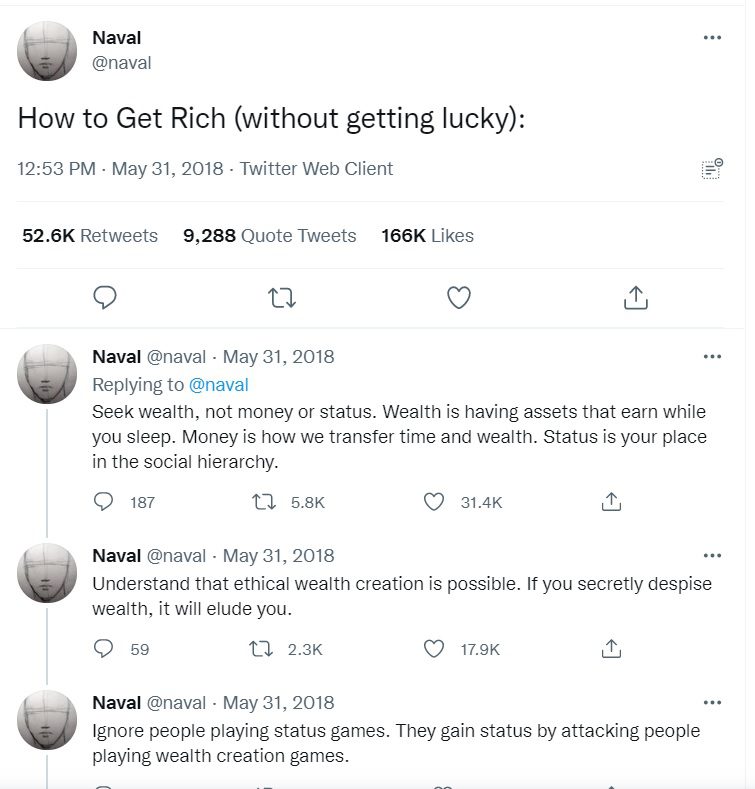
4. Include Images, Videos, and GIFs in Your Tweets
You have a better chance of stopping scrollers and encouraging them to look at your content if you include an accompanying image, GIF, or video. It’s recently become trendy to couple Tweets and Gifs or photos to create memes.
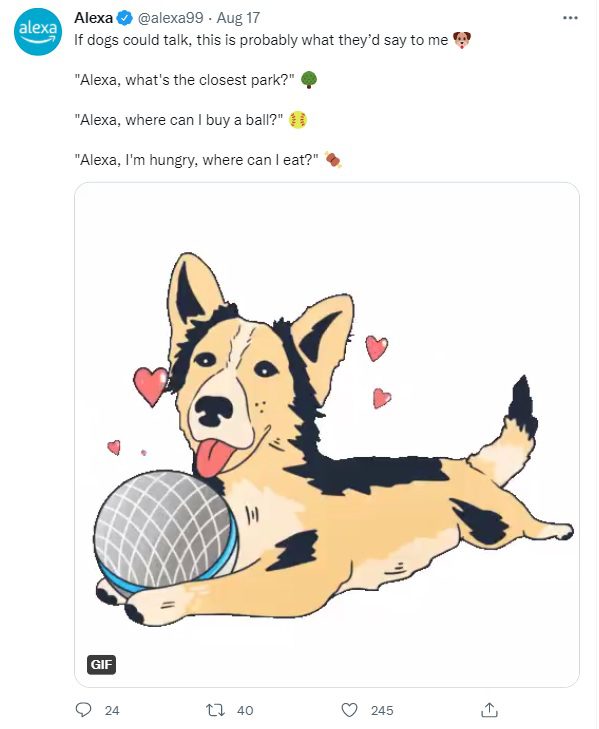
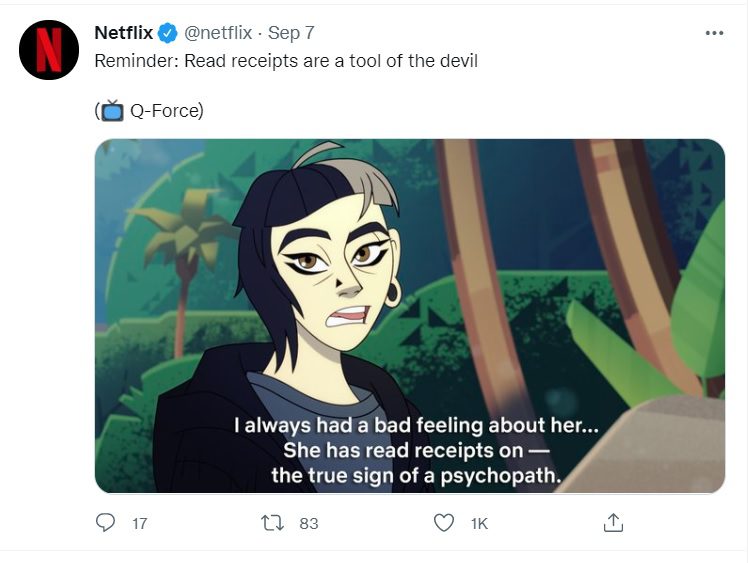

Notice that videos are six times more likely to be shared than other forms of media, and they receive ten times more engagement. So, take more time creating videos.
5. Use Twitter Polls
Polls are the simplest way to collect feedback from your audience and a terrific approach to get people to share their thoughts and build lasting relationships. You can increase engagement, create organic excitement, and start a dialogue with your audience by hiring a creative scenario. Only a few of the methods to use polls in your content strategy are to reveal a few information about the launch of a new product or an upcoming event, to ask about your fan favorites, to ask industry-related questions, and to gather customer/user feedback.

Your Twitter profile portrays your brand. Therefore it’s crucial to take your time managing your Twitter presence by the lesson you learned above.
Too Long; Didn’t Read – Twitter Algorithm in a Nutshell
We discussed quite a few points in this blog post so let’s sum it all up. You need to be familiar with how the Twitter algorithm works to get the best results, no matter your purpose. Remember the EARRR principle: engagement, activity, recency, rich media, and relevance. These are the key ranking factors the Twitter algorithm uses to process your content and push it in front of a certain audience. Whatever you want to post on the platform, ensure it complies with at least 3 of these ranking signals for better results. And keep in mind the golden rule of success on any social platform is consistency. You’ll guarantee your success on Twitter by being organized and consistent. Good luck.
Read more of our informative content:
- 10 Best Instagram Followers Apps for Faster Instagram Growth
- Linktree Alternative: Myurls.bio [100% Free]
- Use This 1000 Free Instagram Followers Trial for Real Followers
- How to Mass DM on Instagram [+Free Instagram Bulk Message Sender]
- 10 Best Unfollow Apps for Instagram 2021
- Know and Beat Instagram’s Daily Limits: 2021 Update
- How to Mass Delete Instagram Posts [+Free Instagram Post Deleter]
- Best Instagram Giveaway Picker and Contest Apps
- How to Share a YouTube Video on Instagram [August 2021 Update]

